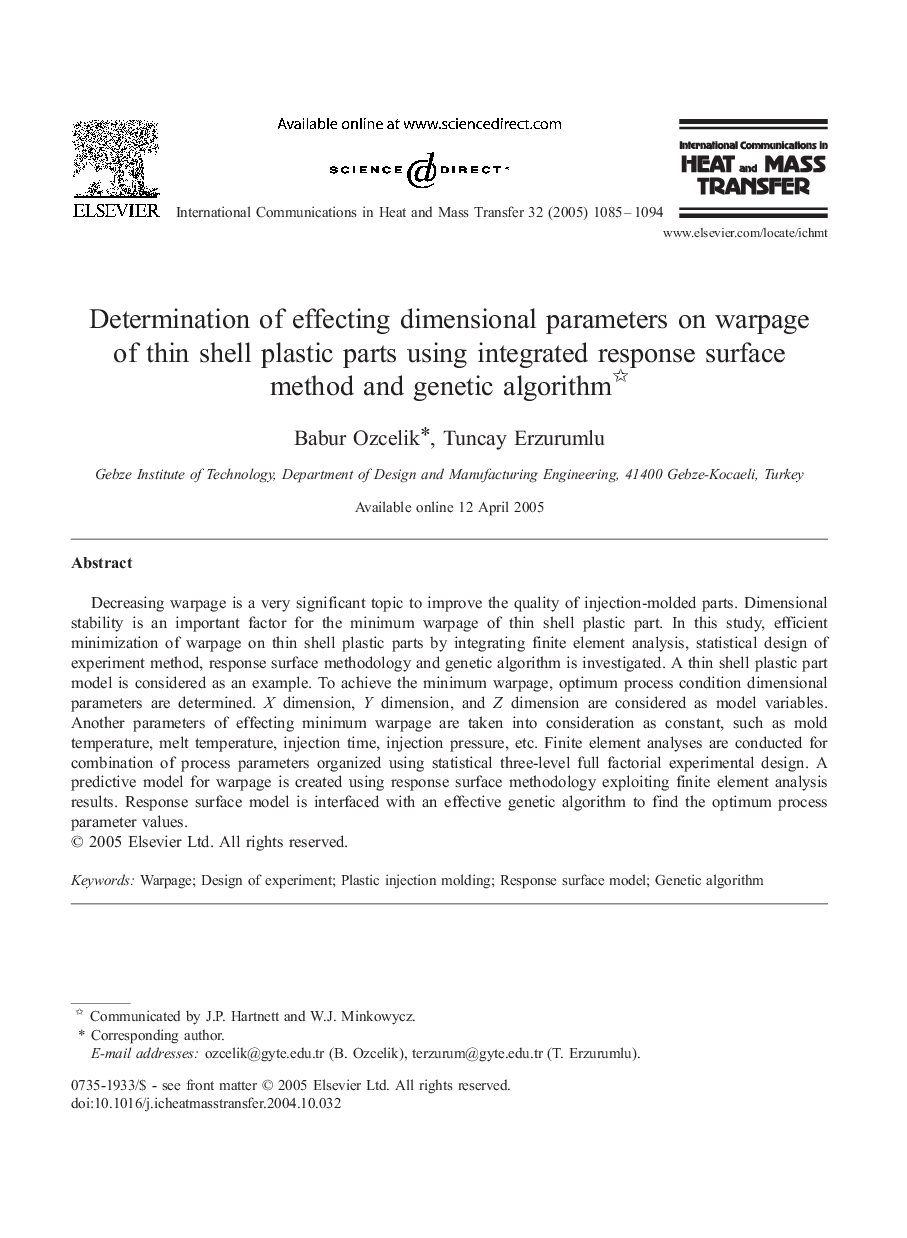| Article ID | Journal | Published Year | Pages | File Type |
|---|---|---|---|---|
| 10392651 | International Communications in Heat and Mass Transfer | 2005 | 10 Pages |
Abstract
Decreasing warpage is a very significant topic to improve the quality of injection-molded parts. Dimensional stability is an important factor for the minimum warpage of thin shell plastic part. In this study, efficient minimization of warpage on thin shell plastic parts by integrating finite element analysis, statistical design of experiment method, response surface methodology and genetic algorithm is investigated. A thin shell plastic part model is considered as an example. To achieve the minimum warpage, optimum process condition dimensional parameters are determined. X dimension, Y dimension, and Z dimension are considered as model variables. Another parameters of effecting minimum warpage are taken into consideration as constant, such as mold temperature, melt temperature, injection time, injection pressure, etc. Finite element analyses are conducted for combination of process parameters organized using statistical three-level full factorial experimental design. A predictive model for warpage is created using response surface methodology exploiting finite element analysis results. Response surface model is interfaced with an effective genetic algorithm to find the optimum process parameter values.
Keywords
Related Topics
Physical Sciences and Engineering
Chemical Engineering
Fluid Flow and Transfer Processes
Authors
Babur Ozcelik, Tuncay Erzurumlu,
